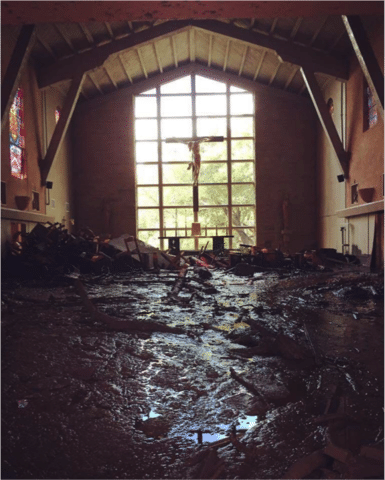Lent: Awake and Paying Attention
A faculty reflection by Cynthia Bourgeault
“Remember, O man, that thou art dust, and to dust thou shalt return.”
As this alumni newsletter wends its way to you, we have barreled past Ash Wednesday, which this year—February 14—happened to coincide with Valentine’s Day. Does it strike you that there’s something deliciously ironic here: that in this of all years, the feast of love and the solemnity of self-examination and repentance come so closely intertwined?
I have to admit that I’ve always loved the Ash Wednesday liturgy. Antiquated, gender-challenged though its language may be, it inevitably and forcibly calls me back, as the ash is smeared on my forehead, to the palpable remembrance that we belong to earth: we are formed of her and will all too swiftly return to her. In a religion that seems to spend so much of its time getting out of the body, this fleeting remembrance of our universal habitat in the biosphere has always struck me as grounding, honest, and strangely comforting.

In Southern California—where my daughter and her family reside and where I regularly teach at La Casa de Maria in Montecito—Advent began with ashes, as wildfires burned out of control and thousands were evacuated or lost their homes. La Casa de Maria squeaked through the fires only to succumb to the horrific mudslides a month later which swept through the property with volcanic force, wrenching away buildings and devastating grounds gently manicured over the years to be a “safe” and “welcoming” space for spiritual work.
There was a stunning incongruity to the whole scene. It was a little eerie to notice how the very baroque and anguishing crucifix in the Chapel—which in recent years has been deemed by some to be a little too harsh for the more genteel, interspiritual tone now being set by the retreat center—finally came at last into its own. The crucifix presided over a river of mud and destruction with the graphic reminder that spiritual work—particularly contemplative spiritual work—is never either completely “welcoming” or “safe.”
Welcome to our brave, new world.
For many decades now, as the contemplative renewal has gathered steam and developed its own interpretive lens on the world, contemplation itself has often been presented as something “safe” and “welcoming”—an invitation to sequester ourselves in beautifully gated monastic compounds perched on fabulous hunks of real estate to sit on our prayer cushions, keep silence, and attend to the serenity of the inner kingdom. The gnawing intuition in the pit of my stomach keeps telling me that this is all about to be swept away before our eyes. Actually, it is being swept away even as we speak—in the great mudslide of divine grace and evolutionary imperative which will pitilessly remove the gated communities of “our little closed loves” (as Teilhard calls them) to prepare for the advent of something infinitely stronger, more collective, more flowing, for which every sinew of our contemplative nerve is being prepared.
Valentine’s Day and Ash Wednesday: Great love and deep remorse of conscience, indissolubly joined in the human heart. This year, more than ever, may Lent find us awake and paying attention.
Love and blessings,

Cynthia Bourgeault

